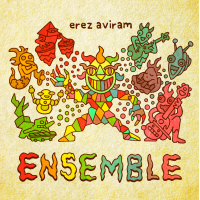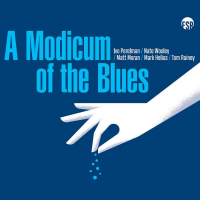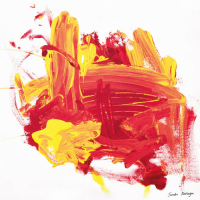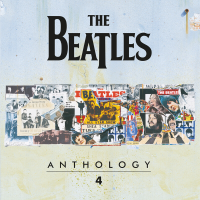Home » Jazz Articles » Album Review » Steve Coleman and Five Elements: Lucidarium
Steve Coleman and Five Elements: Lucidarium
His bright, warm alto sparks a brief quartet with violaist Mat Maneri, trumpeter Jonathan Finlayson, and trombonist Dana Leong on "Ten Steppin (Door to the Sixty). When the band kicks in, atmospheric vocals by Jen Shyu and Kyoko Kitamura float through the hesitation funk. Drew Gress bows the long tones for the vocal quartet to sing over on the title track. Prieto teases the cymbals while Gress and Maneri ooze string. Even Taborn's piano sounds altered. The slow and stately exposition gives way to the busy ultra funk of "Plagal Transitions. Coleman blows bubbling alto, swapping licks with Finlayson and harmonica whiz Gregoire Maret. Taborn takes a run with the complex theme, giving way to Coleman's exhuberant improvisation. Coleman veteran Kokayi deftly raps through the rhythmic minefield the saxophonist calls home.
Opening with otherworldly vocals, Meditation on Cardinal 137 moves at a lazy mid-tempo with Perez and Terry busy on percussion. Taborn stabs piano accents; Rave Coltrane and Coleman contribute low-key variations haunted by the wordless chorus. Maneri, Leong, and Gress arco out of time. Perez's emphatic percussion grounds the floating voices and horns for the first half of "Kabbalah. Once the rhythm kicks in, Coleman dialogues with a trumpet, his precise intonation occasionally slipping around the edges to nudge pitchless playing. Maret and Taborn duet with Taborn prickly and Maret slippery on "Beyond All We Know, an old composition that originally appeared on Black Science. Coleman states the theme with the string trio bowing portentously, and the piece quickly builds to a slow-moving group improvisation.
First percussion with piano then a vocal trio, the two Diasporatic Transitions create brief interludes dissolving into the ambitious "Egypt to Crypts in Hieroglyphs. An amorphous intro snaps into discipline with an amusing vocal arrangement supporting Kokayi's deep thoughts. Doug Hammond's "Perspicuity gives Coleman and Alessi room to roam, as well as giving Taborn a rush of expression. Maneri deeply ruminates on the riff before the abrupt end.
Still without an American label, Coleman has found a crucial place to document his restless creative search on France's Label Bleu. Lucidarium continues to argue for Coleman's inclusion in an elite circle of jazz theorists and performers whose unwavering vision are changing the music and listeners forever.
Track Listing
Ten Steppin' (Door to the Sixty); Lucidarium (Beyond Doors); Plagal Transitions; Meditations on Cardinal; Kabbalah; Beyond All We Know; Diasporatic Transitions I; Diasporatic Transitions II; Egypt to Crypts in Hieroglyphs; Perspicuity.
Personnel
Steve Coleman
saxophone, altoSteve Coleman: alto saxophone; Ravi Coltrane: tenor saxophone; Jonathan Finlayson, Ralph Alessi: trumpet; Gregoire Maret: harmonica; Dana Leong: trombone, cello; Mat Maneri: viola; Craig Taborn: keyboards; Anthony Tidd: bass; Drew Gress: acoustic bass; Dafnis Prieto: drums; Ramon Garcia Perez: percussion; Jen Shyu, Kyoko Kitamura, Judith Berkson, Theo Bleckman, Lorin Benedict: vocals; Kokayi: vocal MC; Yosvany Terry: shekere.
Album information
Title: Lucidarium | Year Released: 2005 | Record Label: Label Bleu
Tags
PREVIOUS / NEXT
Steve Coleman Concerts
Support All About Jazz
 All About Jazz has been a pillar of jazz since 1995, championing it as an art form and, more importantly, supporting the musicians who make it. Our enduring commitment has made "AAJ" one of the most culturally important websites of its kind, read by hundreds of thousands of fans, musicians and industry figures every month.
All About Jazz has been a pillar of jazz since 1995, championing it as an art form and, more importantly, supporting the musicians who make it. Our enduring commitment has made "AAJ" one of the most culturally important websites of its kind, read by hundreds of thousands of fans, musicians and industry figures every month.




























